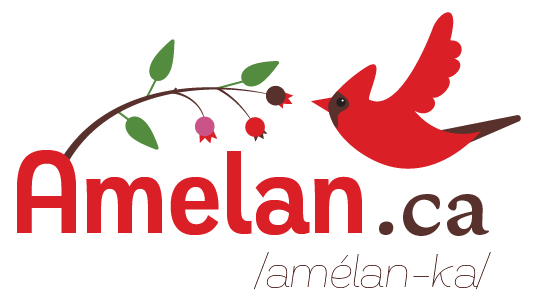Native Plant Resources
Botany is now at your fingertips! Many resources exist, both online and offline, to help you discover and choose the right plants, as well as identify and avoid the not-so-good ones. Check out the guide on the right for the definitions I use, and the links below to find out more!
Quick glossary of plant categories
-
A native plant has been present historically in an ecological region for a very long time, long enough for animals and other living things to have developed complex relationships on which the full picture is often misunderstood.
On the other side, exotic or non-native plants arrived here less than a millennium ago. Most exotic plants feed very few local species of animals.
-
Aggressive plants can dominate an ecosystem or even your yard by their spreading nature. But this is not necessarily negative for the ecosystem, if the plant is native.
Naturalized plants are exotic (non-native) plants present in an area altered by humans. They do not need human help to grow, but remain less aggressive than invasive plants and therefore might not dominate ecosystems completely.
In the case of invasive plants, all aggressive and exotic, they tend to dominate an ecosystem by spreading by roots, rhizomes and/or seeds. For example, the Callery/Bradford Pear tree (Pyrus calleryana) is known to spread very often by birds eating its fruit. Consult your local invasive species council for a list of the most prevalent in your area.
-
Known either as "trees" or "shrubs", woody plants have lignin, which is a scientific term for "wood". Some plants, such as wintergreen (Gaultheria procumbens) are very small but still have woody structures, which puts them under the category of "shrubs".
Herbaceous plants are either perennial or annual. When a plant is perennial, the root system survives the winter each year and will grow back the next year until the plant dies. This sometimes depends on the nature of the plant, sometimes on the climate. For example, Jewelweed (Impatiens capensis) is considered annual, native to the Wabanaki-Acadian forest and sometimes aggressive since it self-sows with many small seeds.
-
An ecotypic plant is a native plant that is part of a population that has been present in a location for a very long time. Ecological regions are used to determine if a plant is ecotypic. This has to do with the genetics of the plant, and is an additional degree to being native. Two plants of the same species may be native to a location, but one may not be ecotypic if it comes from very far away.
Cultivars, or nativars if the species is native in origin, are a cultivated variety of a plant. These plants available in nurseries have the name of the variety in quotation marks (Example: Asclepias incarnata 'Cinderella') They are often created for humans, for utilitarian or aesthetic reasons. For animals such as pollinators, it is often not known if a cultivar will be sterile, determining if it will be able to feed them or not. This makes cultivars less suited to ecological restoration projects as a general rule.
Useful websites
-
Curious about the plants that grow in your area? Here are some links:
iNaturalist and Seek
Atlantic Canada Conservation Data Centre
GoBotany (for New England, but may be applicable to the Maritimes)
-
PlantWise from the NB and NS invasive species councils feature the “Grow Me Instead” guide, showing the plants we should and shouldn’t plant
“Into the Wabanaki” Forest care guide w/ Community Forests International
Pollinator Partnership (Does not include NB)
Xerces society (For the United States)
-
Join conservationist Doug Tallamy in mapping Homegrown National Park (Homegrown National Park)
Join The Butterflyway Project / L'Effet Papillon of the David Suzuki Foundation
Help our nighttime wildlife by reducing light pollution: International Dark Sky Association
-
Nova Scotia
New Brunswick
Prince Edward Island

